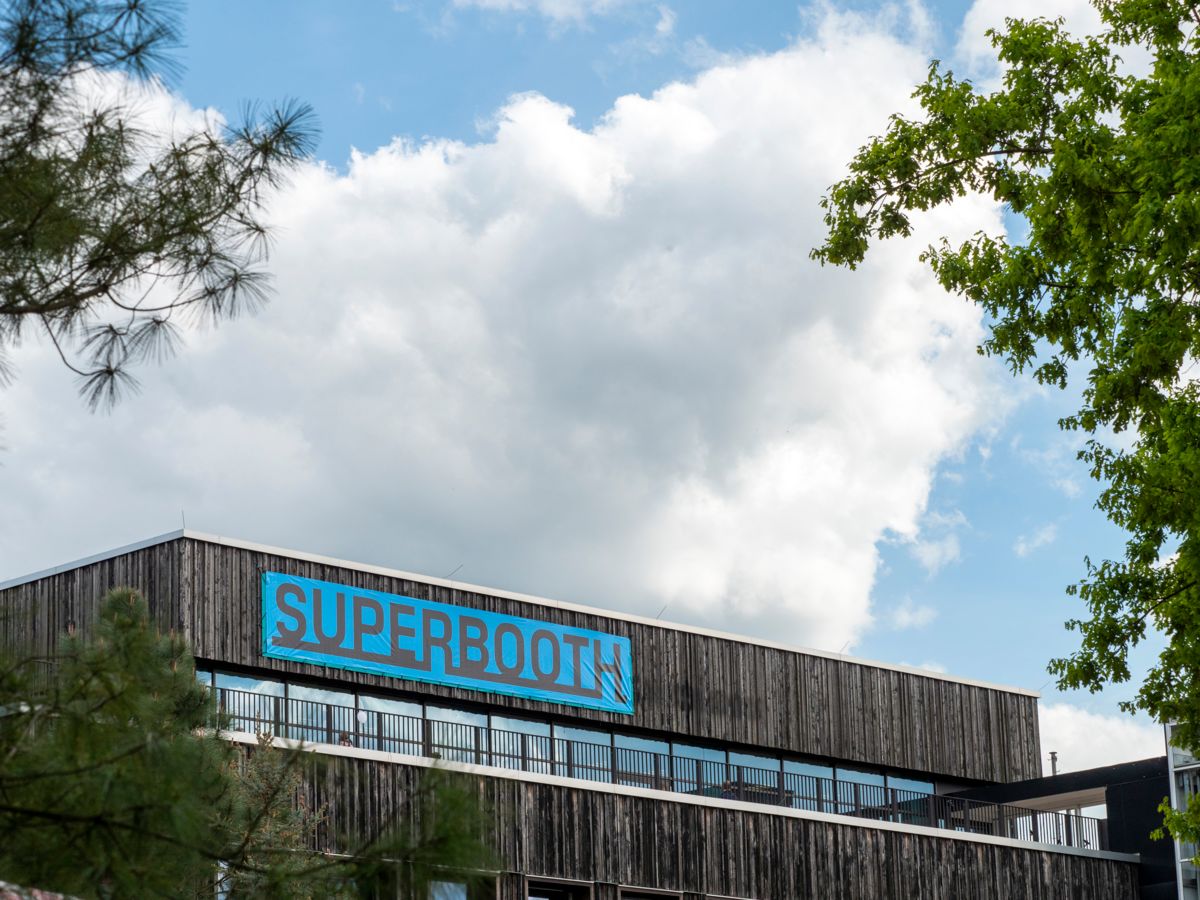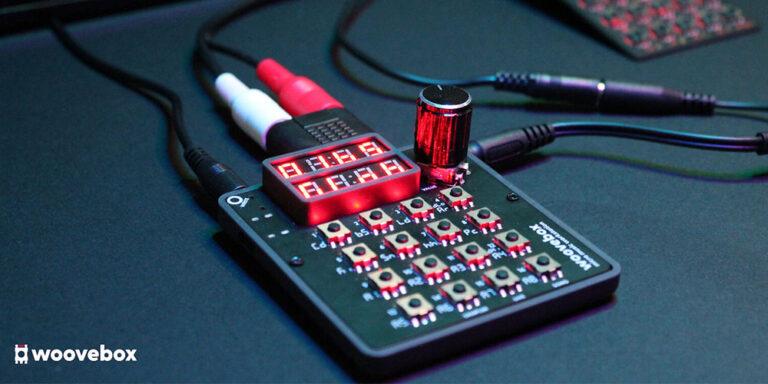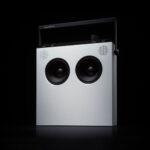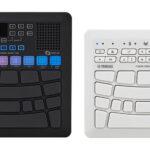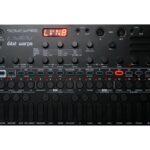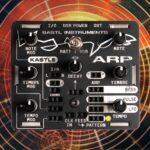Hey there! So, the Superbooth 2023 event is all wrapped up now. I was looking forward to going this year, but unfortunately, something came up and I couldn’t make it. I’ve been wanting to attend for a few years now, but as I couldn’t, I decided to focus on building this website. Something I’ve been thinking about for a while.
I’ve been to NAMM in Los Angeles quite a few times, and while it’s fun, it’s also a lot to deal with. Superbooth appears to have a mellow vibe all around that just seems more enjoyable. I was looking forward to seeing some new exciting gear and was pleasantly surprised. Here are some highlights for the battery-operated side of things.
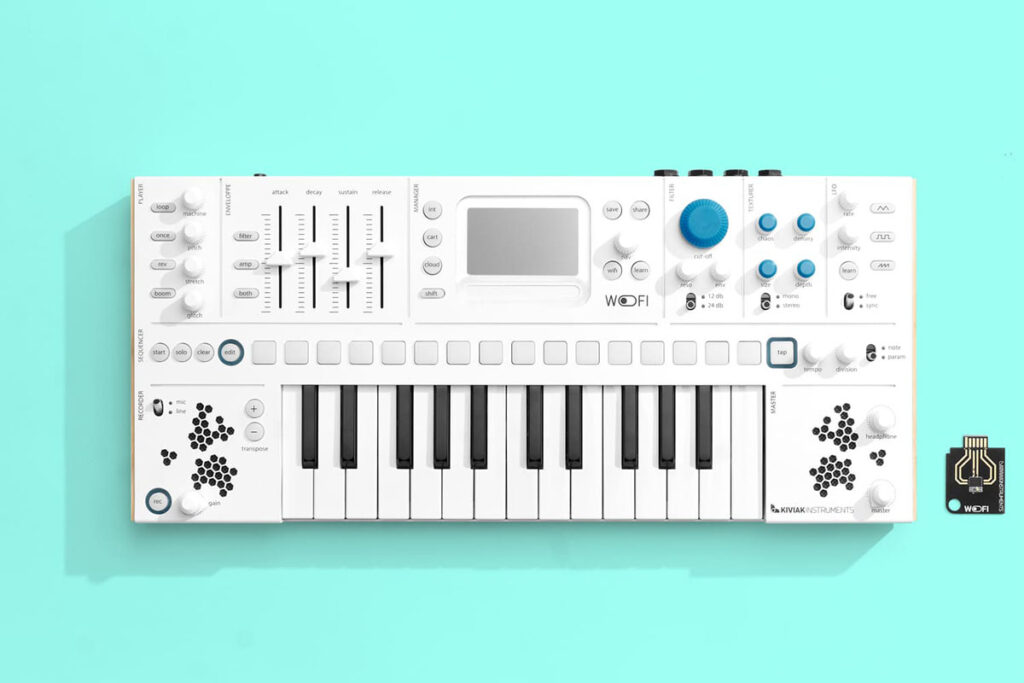
This portable sampling keyboard first stood out as it boasts wifi connectivity, looks great, and has some unique features. A few of the standouts are the Player, which allows you to color your sound and emulate classic samplers and their modes. Really interested to see the list of classic samplers. The Manager in the middle, allows you to see the settings of what your changing, manage your sample via Wifi, and use the touch strip below the screen. There’s an effect module called the Texturer that seems to be a mix of shimmer and granular synthesis. The Sequencer is 16-step polyphonic or can be used as an arpeggiator, and you can also step sequence parameters. Finally, the Recorder (left of keys) lets you choose between a line or internal mic, and the Master to the right has stereo outs for the headphones or line-out. There are also internal speakers in these areas. I really like how they made the grills artistic.
I’m not quite sure how I feel about the wifi feature. It’s used to share patches, upload and download samples, or for backups. You can also back up to a cartridge, as seen in the picture, but this looks proprietary. They noted this mywo.fi community will be free, and for a portable keyboard the idea of accessing more patches wherever you have wifi access is a solid idea. I guess I’ve just seen too many online communities not last and when it’s tied to the function of the machine, I just wonder how this will age. Looking forward to learning more as details emerge.
Discover: Video via DECIMA1
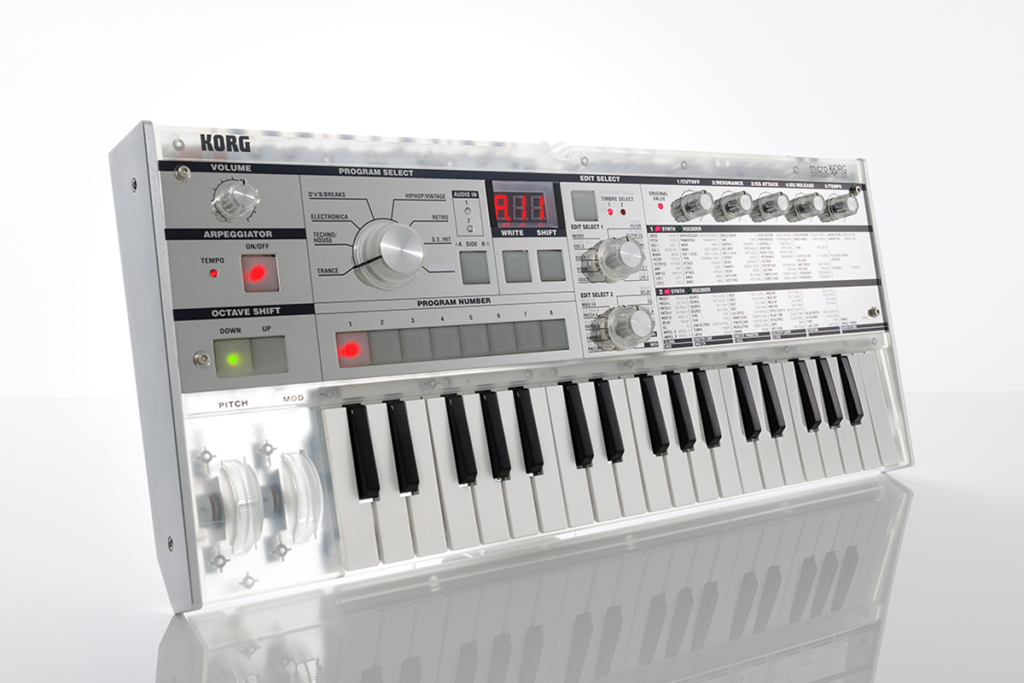
It’s the 20th anniversary of the microKORG, and to celebrate Korg announced a special Crystal edition of this popular battery-operated synth. Korg calls this a reincarnation, and with that in mind, this new edition is mainly a visual update. It has a “Skeleton” type translucent chassis, stainless mirror-finish panel, aluminum side panels, and semi-translucent knobs and dials. It also comes with a transparent carry bag. It appears this is exclusive via the Korg Direct Reverb shop. It’s $529 USD, which is the same as the microKorg-S and $100 more than the classic version.
There are like 9 versions of the microKORG if I remember right. The classic version, microKORG-S, the 15th-anniversary platinum edition, the XL and XL+, a gold edition, black edition, black X red edition, and a rare reverse key edition. Did I miss any? It’s a great synth and has been stated to be one of the most popular synths in recent history. It also has the same synthesis engine as the Korg MS-2000, which was an inspiring machine and easier to program imo. I guess with the new edition, it would have been nice along with the visual change to maybe add a few other features.
Discover: Video via Korg
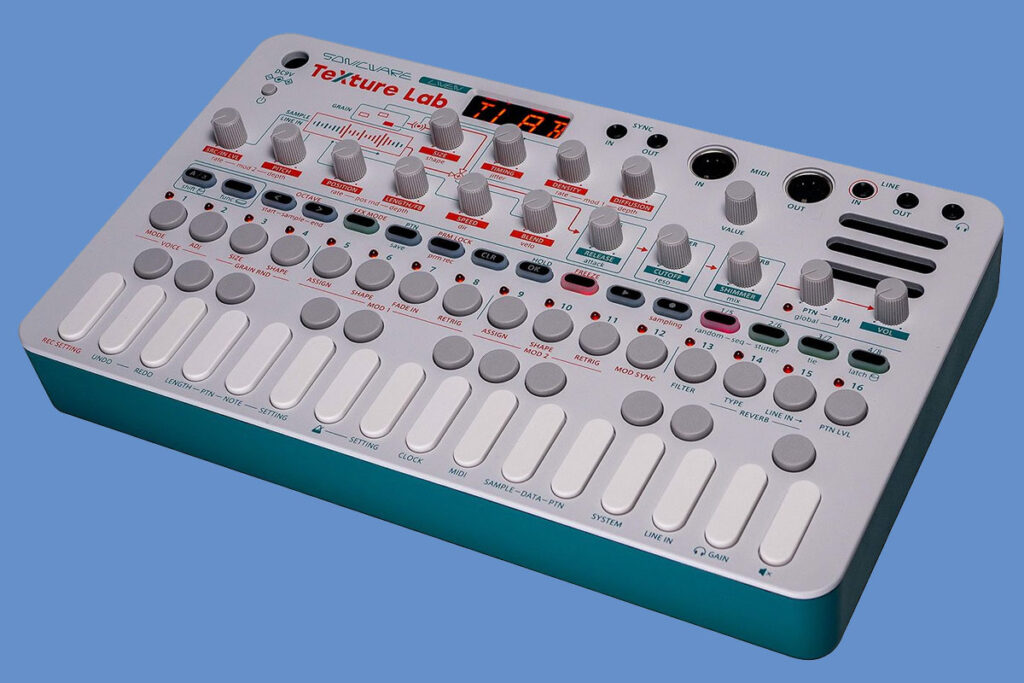
This new entry to the LIVEN series joins a few granular options this year such as the WoFi, the Tempera, and the new Tasty Chips GR-MEGA. The Texture Lab stands out as it’s priced at $239 (like all of the Liven series), which puts it cheaper than the 1010music Lemondrop and the new-ish Bastl Microgranny Monolith.
The Texture Lab is a battery-operated granular synthesizer with a granular effect mode. This gives you a 4-voice granular synth, which can record 32 samples up to 6 seconds each, but also processes stereo signals from the line input. Doing this you can freeze the input for up to 6 seconds for granulated effects. It has a 1-track, 128-step sequencer with parameter locking that can be recorded live or step sequenced. To top it off the Texture Lab has 6 six high-quality stereo reverb types, and each one has a shimmer parameter. If you’re looking for a portable machine that offers granular synthesis this could be the one. I’ve owned the Liven 8-Bit Warps, and wasn’t too sold on the build or sound quality, but the demos for this have so far sounded pretty good.
Discover: Sounds via LimbicBits
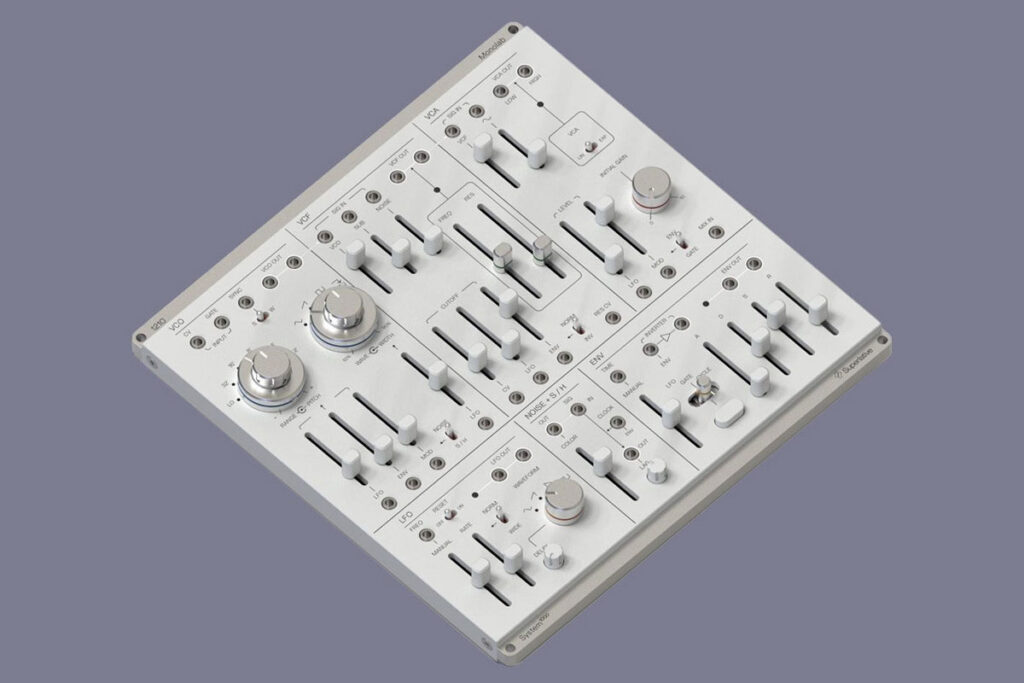
The Monolab is a semi-modular synth that, stated on the website is the “distillation of subtractive synthesis in its most accessible, portable, and configurable form.” It’s designed by Superlative, which is well known for the SB01 Space Bee, a re-imaging of the Roland SH-101. It has the same clean and sleek look, and so far what I’ve heard it sounds pretty good. It comes with a U or L-shaped stand so you can prop it up, and it has an ultra-low power design, so it can be powered via USB or the SB01. Full details and specs are slated for this June. Curious to see if this can be powered by other machines.
I’m interested to see more from this synth. It looks great, and while I would love to dive into the new Intellijel Cascadia, this is more in line with how I interact with modular. After the announcement, I’ve seen concerns from some in the music community. The Space Bee was fully funded on Kickstarter in 2019, and backers have yet to see their rewards. I’ve been involved in a few Kickstarter campaigns myself and it’s a lot of work. We also had that chip issues during the past couple of years. It’s a challenging thing overall, but I guess the apprehension would be getting excited about something that might take a while to happen. Will be keeping an eye on this one, and hope both machines get into the hands of all who want one. Superlative makes some sleek and would like to see them grow.
Discover: Sound demo via Bonedo
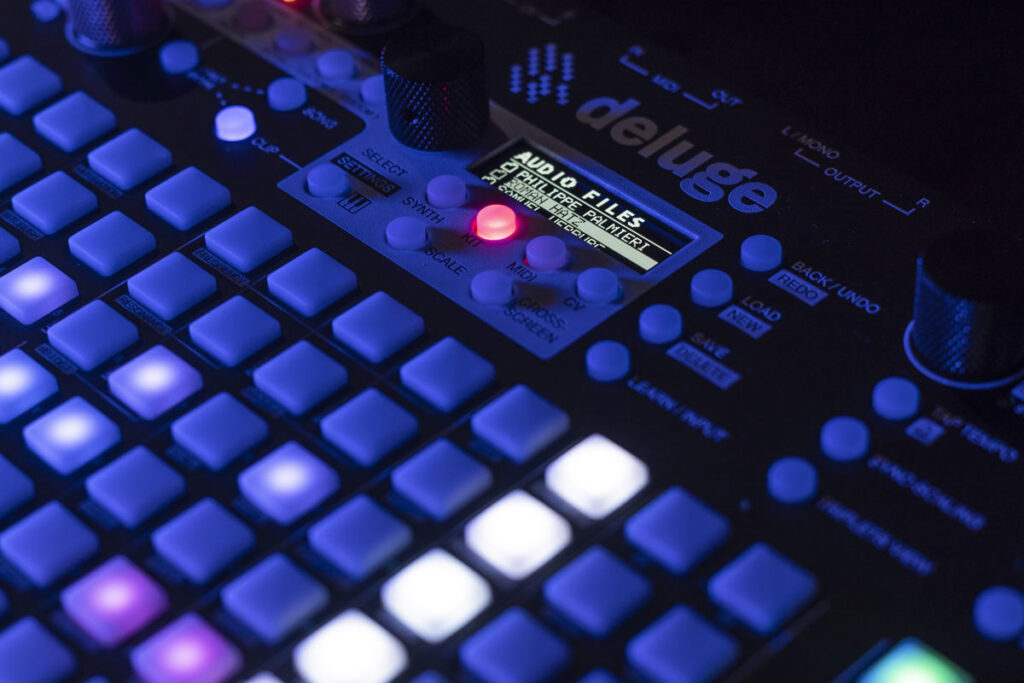
While there’s not a new version of this amazing machine, the Synthstrom team had a very exciting announcement this year. The Deluge is going open source. The community—which is very passionate by the way—can dive into the code and implement new features, make refinements, and just add more to this inspiring do-everything box.
There will be two repositories that Synthstrom will maintain and update, the main “official” repository and the community-driven one. This way any firmware will be 100% compatible with your machine’s hardware warranty, which will not the case for non-official community firmware.
Discover: Synthrom Open Source event via Cuckoo
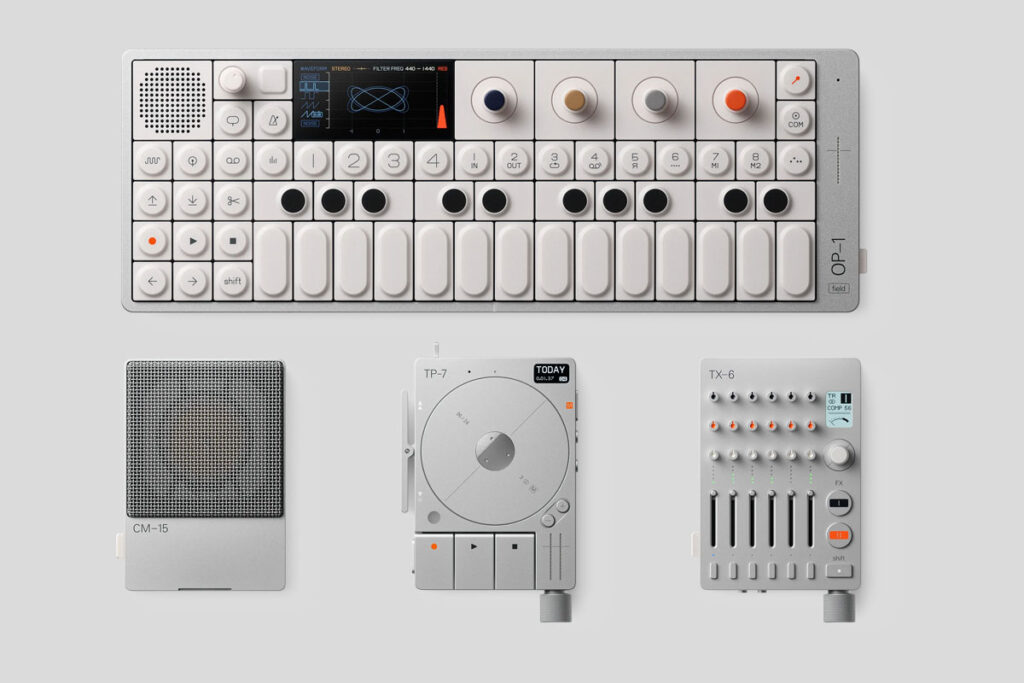
Teenage Engineering – CM-15 & TP-7
Teenage Engineering announced two new additions to their Field System, and in classic TE fashion shook the community up a bit. There’s no doubt they continue to be one of the more polarizing companies out there. The new additions are the CM-15 field microphone and the TP-7 field recorder. Both follow the same form factor as the TX-6 field mixer and imo look great.
The CM-15 has a 1-inch large-diaphragm capsule, come with a built-in USB-C audio interface and built-in preamp, has multiple outputs that can be used simultaneously (mini XLR, 3.5 mm jack, and USB-C), and can be powered via USB, phantom power, or with the internal batter (10-hour lifespan). To be honest I’m not that well-versed in microphones. I do know that the diaphragm was made by Peluso. These are high-quality mics, and only a couple of their mics are below the $1k mark. This combined with the fact that TE needed to craft another custom enclosure for this mic and it could explain the higher price point. However, this is also me looking through the lens that the field system is their higher-end offering. There are alternatives out there. The Tula Mics are a common alternative.
The TP-7 is the new field recorder and this one was a surprise. After the update to the TX-6 allowed for recording to a USB drive, I didn’t imagine a recorder was next in the system. It feels like TE created a device that casts a wider net on potential customers. They said it was “engineered in every detail to do only one thing and to do it well.” This could be recording multi-track songs (6-stereo channels along with the TX-6), interviews, podcasts, or taking notes which then get captured in the TP-7 app and converted to text. It has an internal mic and speaker, “three stereo two-way jacks to be used as either inputs or outputs, for connecting external mics, headphones, studio monitors, or any other audio equipment”, and an internal 128 GB of storage. For controls, it has a quick memo button, stop/play/record buttons, a rocker that allows you to scrub through audio, and the most noticeable feature, the motorized tape reel. This not only spins while playing, but you can use it for scrubbing or pausing. I’m curious to know how long this feature will last or if there are any potential mechanical issues (in a similar vein to the OPZ knobs). This is the first machine my wife has stated she would also like to use, as she’s a writer and enjoys taking breaks from a computer. I’ll be keeping an eye on this one, and genuinely curious if we’ll see any TE-style hidden features with it or any surprise updates.
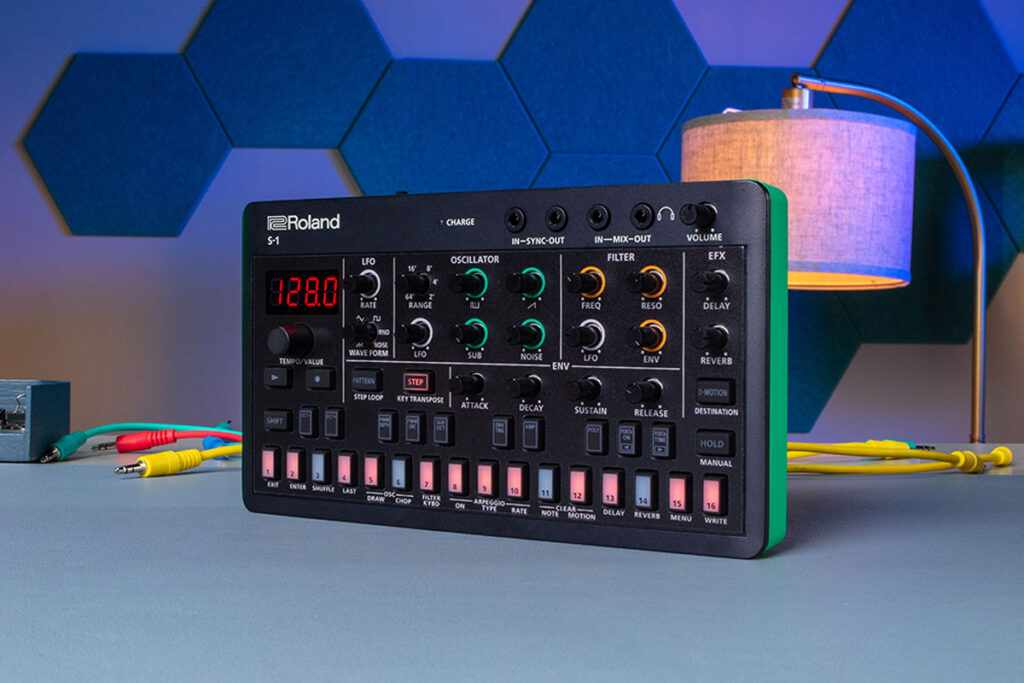
To wrap up, I wanted to share one of the biggest highlights this year. Indeed, Roland was not as Superbooth, but they did use the opportunity to announce a new addition to the Aira Compact series. The S-1 is a small polysynth inspired by the SH-101. It employs Roland’s Analog Circuit Behavior (ACB) to faithfully recreate the tone and response of the SH-101. Like all of the Aira compacts, it’s battery-operated, but this one has some new features that make it a must-have. It has a 64-step sequencer with 64 patterns, along with sub-steps, motion recording, and probability settings. There’s an internal reverb and delay with different types and setting for each, and you can even craft custom waveshapes using the OSC Draw function or us Chop which lets you cut waveforms into sections. The one thing that’s hit or miss, depending on what you like, is the D-Motion gesture control.
Discover: Sound demo via LimbicBits
Wrap-up
Well, that’s it for this highlight and the inaugural post for battery op. Each of these machines will no doubt make an appearance again. Hopefully, I didn’t miss much this year, and hope you stick around.

